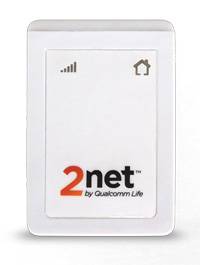 While interest in remote patient monitoring is very high and various kinds of programs are being deployed, the market is still maturing in many ways, according to a new report from Chilmark Research.
While interest in remote patient monitoring is very high and various kinds of programs are being deployed, the market is still maturing in many ways, according to a new report from Chilmark Research.
“Despite the broad interest in these new models of care, it is clear that this market is in its very early stages of maturity,” Chilmark writes in the report, entitled Migration to Connected Health. “There are no standard customers and there is a high degree of variation among vendors. We have found little uniformity in application/use cases even within the context of a single disease state, and even less so in terms of monitoring a large, chronically ill population.”
Up until now, the report contends, the innovation in the market has been around the development of sensors and remote monitoring technology. At this point the devices are becoming commoditized as payers and providers discover that affecting outcomes takes more than just deploying remote patient monitoring technology.
“The notion that simply discharging patients with some technology will prevent readmission or ensure positive outcomes is more wishful thinking than reality,” the report says. “Today, the provision of wraparound resources – social or educational platforms (e.g. PatientsLikeMe), companion apps, and so on -- remains rare. While innovations in mobile technology – mobile electrocardiograms (ECG), for example – may introduce convenience, they can be tricky to use correctly and consistently with a single patient – let alone across a population.”
It’s important to have a patient onboarding process that really allows care providers to understand patients’ particular situations and design monitoring systems that fit into their life.
Another aspect that is complicated to implement are alarms that go off when a monitored patient’s vital signs cross a certain threshold. In practice, they don’t work so well.
“In particular, the burdens of workflow modification, alert fatigue, and proper staff training have proven challenging to a ‘plug and play’ alerting model,” the report says. “Simply put, clinicians are not experts at interpreting what an out of range alert flag may mean. Moreover, as discussed above, the rules engines and algorithms involved are not 100 percent accurate; according to multiple vendors we spoke with false positives are still prevalent. This is due in part to design – it is better to cast a broad net and catch real problems along with a few erroneous red flags, than a narrow one that misses a legitimate adverse event.”
Chilmark predicts that it could be five years before an automated alerting method that really works is developed and makes it through the FDA.
Despite these hiccups to implementation, many providers and payers are working with a range of vendors to implement remote monitoring solutions. At the moment, the buyers in this market are much more likely to be payers, Chilmark writes. Many providers, however, are waiting for the technology to mature and for Medicaid reimbursement to become more widespread.
















